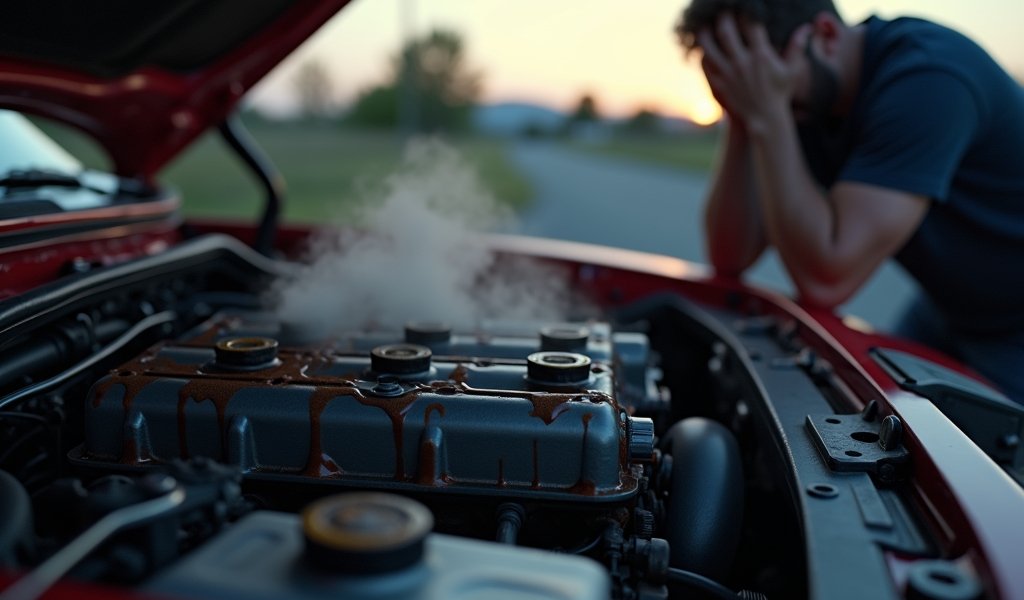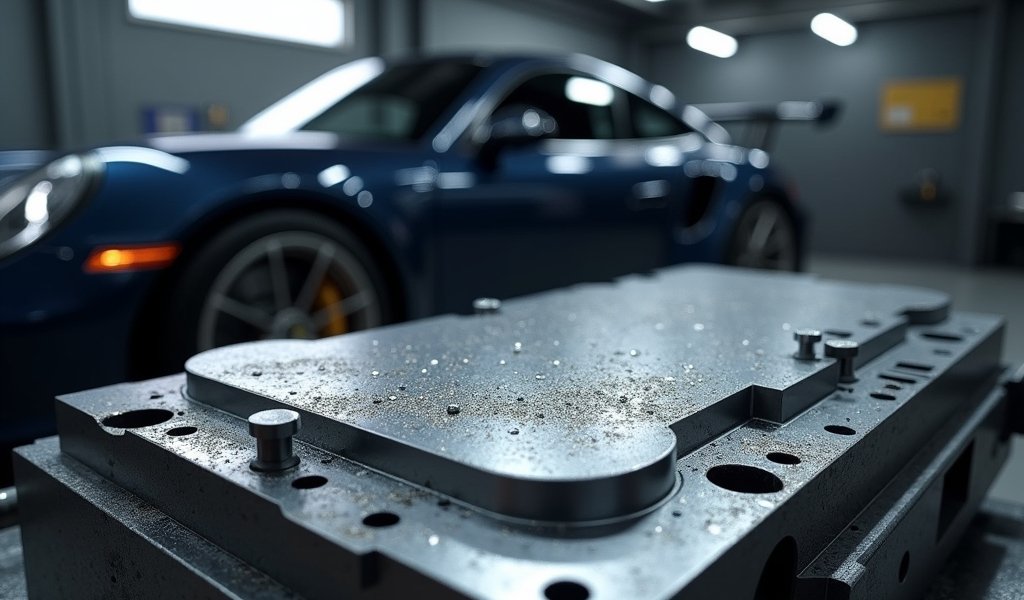Overview
Cylinder head resurfacing requires precise adherence to manufacturer specifications for flatness tolerance (typically 0.002″-0.006″), material removal limits (0.008″-0.010″ for aluminum, 0.020″-0.030″ for cast iron), and surface finish requirements (20-30 Ra for MLS gaskets). Professional resurfacing is strongly recommended over DIY methods to ensure proper engine sealing, prevent compression issues, and avoid costly failures like blown head gaskets.
Table of Contents
- Understanding Cylinder Head Resurfacing
- Why Resurfacing Matters
- Factory Specifications and Why They’re Important
- Critical Tolerance Measurements
- Common Resurfacing Methods
- Material-Specific Considerations
- Common Mistakes to Avoid
- DIY vs. Professional Resurfacing
- Conclusion
- Frequently Asked Questions
Understanding Cylinder Head Resurfacing
Let me tell you something about cylinder head resurfacing specifications that most folks don’t realize – this isn’t just about making something smooth. It’s precision work that can make or break your engine’s performance.
Cylinder head resurfacing is the process of machining the bottom surface of a cylinder head (the part that bolts to the engine block) to restore its flatness and surface finish. Think of it as giving your engine a fresh, perfectly flat foundation to build proper compression upon.
When an engine overheats or ages, the cylinder head can warp ever so slightly – we’re talking thousandths of an inch here, but that’s enough to cause big problems. A warped head can’t seal properly against the block, leading to compression loss, blown head gaskets, and a host of other expensive issues.
I’ve been working on engines for over twenty years, and I can tell you that proper cylinder head resurfacing is one of those “do it right or do it twice” procedures. The specifications matter more than most people realize.
Why Resurfacing Matters
You might be wondering why we can’t just slap a new gasket on and call it a day. Well, a gasket can only do so much. It’s designed to seal minor imperfections between two relatively flat surfaces – not to bridge gaps caused by warpage.
There are several tell-tale signs that your cylinder head needs resurfacing:
- White smoke from the exhaust (coolant getting into combustion chambers)
- Bubbles in your radiator or overflow tank
- Engine overheating issues that keep coming back
- Unexplained coolant loss with no visible leaks
- Failed compression or leak-down tests
I had a customer bring in a Honda Civic that had gone through three head gaskets in two years. Previous shops had simply replaced the gaskets without checking if the head was flat. One quick measurement showed the head was warped by 0.008″ – way beyond spec. After proper resurfacing, that same engine ran for another 150,000 miles without issue.

Factory Specifications and Why They’re Important
Every engine has manufacturer-specified tolerances for cylinder head flatness, and these aren’t arbitrary numbers. Engineers spent countless hours determining exactly how flat that surface needs to be for optimal performance and longevity.
Finding the factory specs for your specific engine is crucial. You can typically find them in:
- Factory service manuals
- Technical service bulletins
- Professional repair databases like Mitchell or AllData
- Sometimes even in the manufacturer’s published engineering standards
These specs will tell you the maximum allowable warpage (usually measured in thousandths of an inch) and the maximum amount of material that can be safely removed during resurfacing.
Here’s the thing – removing too much material changes your engine’s compression ratio and can affect valve train geometry. Not removing enough means the head won’t seal properly. It’s a balancing act that requires precision and respect for the factory specifications.
Critical Tolerance Measurements
When we’re talking about cylinder head resurfacing, there are three critical measurements that must be considered: flatness tolerance, material removal limits, and surface finish requirements.
Flatness Tolerance
Flatness is measured by placing a precision straightedge across the cylinder head surface in multiple directions and using feeler gauges to check for gaps. Most manufacturers specify a maximum warpage of between 0.002″ to 0.006″ (0.05mm to 0.15mm) depending on the engine.
For example, a typical Honda 4-cylinder might specify no more than 0.002″ of warpage, while a heavy-duty diesel might allow up to 0.006″. Exceed these limits, and resurfacing becomes necessary.
Material Removal Limits
This is where many shops make critical mistakes. Every engine has a maximum amount of material that can be safely removed from the cylinder head. These limits typically are:
- Aluminum heads: Usually 0.008″ to 0.010″ (0.2mm to 0.25mm) maximum
- Cast iron heads: Usually 0.020″ to 0.030″ (0.5mm to 0.75mm) maximum
Removing more material than specified doesn’t just change compression ratio – it can lead to piston-to-valve clearance issues, improper cam timing, and even contact between pistons and valves. I’ve seen catastrophic engine failures from exceeding these limits.
Surface Finish Requirements
Surface finish is measured in Ra (roughness average) or RMS (root mean square) values. Different head gasket types require different surface finishes:
- MLS (Multi-Layer Steel) gaskets: Usually require 20-30 Ra
- Composite gaskets: Often specify 50-60 Ra
- Copper gaskets: May need 80-100 Ra
Using the wrong surface finish for your gasket type is like wearing sandals in a snowstorm – technically you have footwear, but it’s not going to work well for the conditions. Always match your surface finish to your gasket requirements.
Common Resurfacing Methods
There are several methods used to resurface cylinder heads, and each has its pros and cons. The right choice depends on your specific engine, material, and requirements.
Milling/Flywheel Cutting
This is the most common method used in shops today. It uses a large rotating cutter with multiple carbide inserts that cuts across the head surface.
Advantages:
- Fast and efficient
- Can remove significant material if needed
- Relatively affordable for shops to perform
Disadvantages:
- Can leave a somewhat rough finish
- May not be ideal for all MLS gasket applications
- Requires skilled operator to get consistent results
Grinding
Cylinder head grinding uses a rotating grinding wheel that moves across the head surface.
Advantages:
- Can achieve very fine surface finishes
- Excellent flatness results
- Good for aluminum heads
Disadvantages:
- Slower than milling
- Requires more expensive equipment
- More operator skill needed
Belt Sanding
This method uses a stationary abrasive belt that the cylinder head is moved across.
Advantages:
- Generates minimal heat (great for aluminum)
- Can produce excellent surface finishes
- Good for minor resurfacing needs
Disadvantages:
- Not ideal for removing significant material
- Slower for major resurfacing jobs
- Requires specialized equipment for proper results
I remember working on a high-performance BMW head that required an extremely precise finish for its MLS gasket. While milling would have been faster, we chose the grinding method to achieve the 20 Ra surface finish specified by the gasket manufacturer. The extra time paid off with perfect sealing and no comebacks.

Material-Specific Considerations
Not all cylinder heads are created equal. The material makes a huge difference in how you approach resurfacing.
Cast Iron Heads
These old-school workhorses are more forgiving during the resurfacing process:
- Can typically have more material removed safely (up to 0.030″ in many cases)
- Less prone to warping during the machining process
- Often use rougher surface finishes (60-100 Ra)
- Can be resurfaced multiple times over the engine’s life
- Work well with traditional composite gaskets
Aluminum Heads
Modern aluminum heads require more finesse:
- Limited material removal (typically max 0.010″)
- More susceptible to warping if excessive heat is generated during machining
- Usually require finer surface finishes (20-60 Ra)
- Often paired with MLS gaskets that have strict surface requirements
- May need specialized coatings or treatments for high-performance applications
I worked on a high-performance LS engine where the aluminum heads had been improperly resurfaced with too rough a finish for the MLS gaskets. The customer had experienced three blown head gaskets before coming to us. After properly resurfacing to the correct 25 Ra finish, the oil leaks stopped and the engine made over 600 horsepower reliably.
For the most demanding applications, some shops now use specialized CNC equipment to ensure perfect flatness and surface finish, especially for racing engines where every detail matters.
Common Mistakes to Avoid
In my years at the shop, I’ve seen plenty of cylinder head resurfacing jobs go wrong. Here are the most common mistakes you should be aware of:
Excessive Material Removal
Removing too much material is like cutting your hair too short – you can’t put it back! Excessive removal leads to:
- Increased compression ratio (which can cause detonation)
- Altered valve timing and clearances
- Potential piston-to-valve contact
- Changes in combustion chamber volume
Incorrect Surface Finish
Using the wrong finish for your gasket type is a recipe for failure. I’ve seen countless head gasket failures from shops that didn’t match the finish to the gasket requirements.
MLS gaskets, which are common in modern engines, typically need a much smoother finish than old-school composite gaskets. Using a rough 80 Ra finish with an MLS gasket that requires 30 Ra is asking for trouble.
Not Checking Related Components
The cylinder head doesn’t exist in isolation. When resurfacing, you must also check:
- Engine block deck for flatness (it could be warped too)
- Valve cover gasket surfaces for distortion
- Head bolts/studs for stretching or damage
- Valve seats for proper sealing after resurfacing
- Valve guides and stems for wear
Not Measuring Before and After
This is like baking without measuring your ingredients. You must know:
- Original warpage amount
- How much material you’re removing
- Final measurements to confirm specifications are met
I once had a customer bring in a Subaru EJ engine that had been “professionally” resurfaced elsewhere. The shop had removed nearly 0.020″ from the aluminum heads when the factory limit was 0.008″. The result? Constant detonation, despite repeated tuning attempts, eventually leading to a cracked piston.
DIY vs. Professional Resurfacing
I understand the appeal of DIY work – I started that way myself. But cylinder head resurfacing is one area where professional equipment makes a huge difference.
When DIY Might Be Acceptable
For very minor cleanup of surface imperfections, some DIY methods might work:
- Using fine sandpaper on a perfectly flat surface (like a surface plate)
- Carefully hand-lapping with abrasive compounds
- Minor cleanup of surface contamination
However, these methods are suitable only for the smallest imperfections and can’t address actual warpage or significant damage.
When to Choose Professional Services
Professional resurfacing is the right choice when:
- Any measurable warpage is detected
- You’re rebuilding an engine and want reliability
- The head has overheated or suffered damage
- You’re using modern MLS gaskets that require precise surface finish
- You care about the engine’s longevity
Professional cylinder head resurfacing typically costs between $75-200 depending on the head type, material, and work needed. That’s a small price compared to the potential cost of a failed head gasket job or engine damage.
According to Engine Labs magazine, the precision equipment used in professional shops can achieve flatness to within 0.0002″ – something simply impossible with DIY methods.
Conclusion
Cylinder head resurfacing isn’t just a mechanical procedure – it’s precision engineering that demands respect for specifications. Whether you’re working with a classic iron-block V8 or a modern aluminum-headed turbo engine, understanding and following the proper resurfacing specifications is crucial for reliability and performance.
Remember these key points:
- Always check and follow factory specifications for your specific engine
- Respect material removal limits to preserve compression ratio and valve geometry
- Match your surface finish to your head gasket type
- Consider professional resurfacing for critical engines
- Measure before and after to confirm specifications are met
I’ve seen proper cylinder head resurfacing transform problematic engines into reliable daily drivers. I’ve also seen improper work turn good engines into paperweights. The difference comes down to understanding and respecting the specifications that engineers developed through years of testing and experience.
Whether you’re a DIY enthusiast learning about this critical engine procedure or someone trying to understand what your mechanic is talking about, I hope this guide helps you appreciate the precision and care that goes into proper cylinder head resurfacing. Your engine’s health and longevity depend on getting these specifications right.
Frequently Asked Questions
How much does it cost to resurface a cylinder head?
Professional cylinder head resurfacing typically costs between $75-200 depending on the material, complexity, and required finish. Many shops charge more for aluminum heads than cast iron due to the additional care required.
How flat does a cylinder head need to be?
Most manufacturers specify maximum warpage between 0.002″-0.006″ (0.05mm-0.15mm) depending on the engine type. Small 4-cylinder engines typically have tighter tolerances than larger V8s.
Can I resurface my cylinder head at home?
DIY resurfacing is generally not recommended except for very minor cleanup. Proper resurfacing requires precision equipment that can achieve the correct flatness and surface finish for your specific engine and gasket type.
How much material can be safely removed from an aluminum head?
Most aluminum cylinder heads specify a maximum material removal of 0.008″-0.010″ (0.2mm-0.25mm) total throughout the head’s life. Exceeding this limit can cause compression, valve timing, and clearance issues.
What surface finish do I need for an MLS head gasket?
Multi-Layer Steel (MLS) gaskets typically require a fine surface finish between 20-30 Ra. This smooth finish is necessary for the multiple thin layers of steel to seal properly against the head and block surfaces.


Pingback: Flywheel Resurfacing Procedure: 5 Steps - knowsyourcar.com